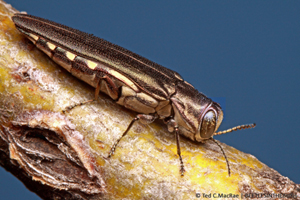Leaf Feeders
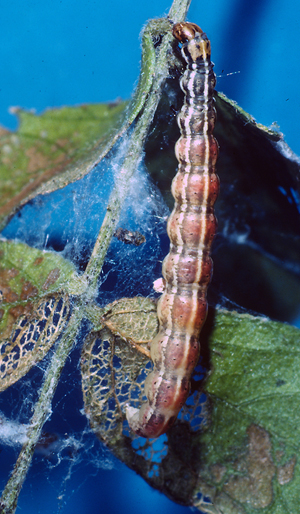
J.A. Davidson, Univ. Md, College Pk, Bugwood.org
Mimosa webworms are gray to brown caterpillars with 5 thin stripes running the length of the body. Mature larvae are just over 0.5 inches long. The first generation is active from early to mid-June. The second generation, which is most destructive, feeds from mid-July to mid-August. The larvae feed on the surface of the foliage and use silk to web leaves together at the ends of branches. Infestations are unattractive but rarely affect tree health. This insect spends the winter as a cocoon-encased pupa in bark crevices or leaf litter. Sunburst thornless honeylocust is very attractive to this insect; control may be needed most years.
Sap Feeders
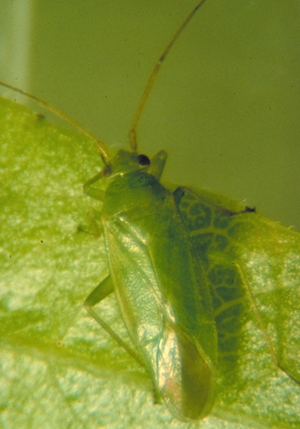
John A. Weidhass, Virginia Polytechnic Institute and State University, Bugwood.org
Honeylocust plant bugs are about 1/8-inch long light green to yellow insects. The nymphs are smaller and cannot fly.
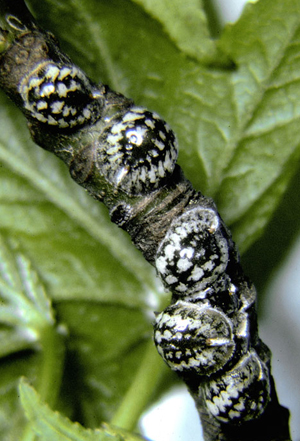
Raymond Gill, California Department of Food and Agriculture, Bugwood.org
Calico scale is a white and dark brown soft scale about 1/4 inch in diameter. It produces a large amount of honeydew in the spring so twigs, branches, and leaves may be covered with sooty mold. This scale can severely weaken trees, making them more vulnerable to drought and other stresses. Egg hatch occurs in May and the crawlers move to leaves to feed for the summer. Nymphs move back to bark for the winter.
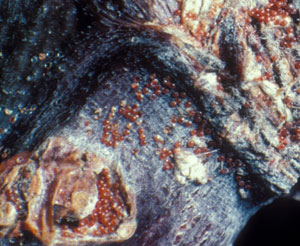
University of Georgia Plant Pathology, University of Georgia, Bugwood.org
The European red mite female is brick red, while the male is a pale yellow-green. They are small and globular. Some individuals may "balloon" to new locations, creating new infestations. They can feed on many different species of plants and cause leaves to become pale and eventually bronze. There can be 6-8 generations per year depending on the weather and they overwinter as eggs that are laid in the bark and near buds (red spheres in image at left). For more information, see Entfact 205.
Borers
Honeylocust borer causes wet, gummy spots around the nodes. Legless straight white grubs bore in the cambium under the spots.
Galls
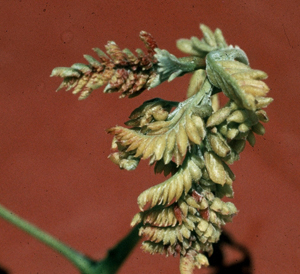
Whitney Cranshaw, Colorado State University, Bugwood.org
Honeylocust pod galls, produced by small orange maggots, form as leaflets expand. Mature galls turn brown and fall to the ground. Destruction of galls as they fall may reduce future populations. An insecticide application at bud break may give some control.
